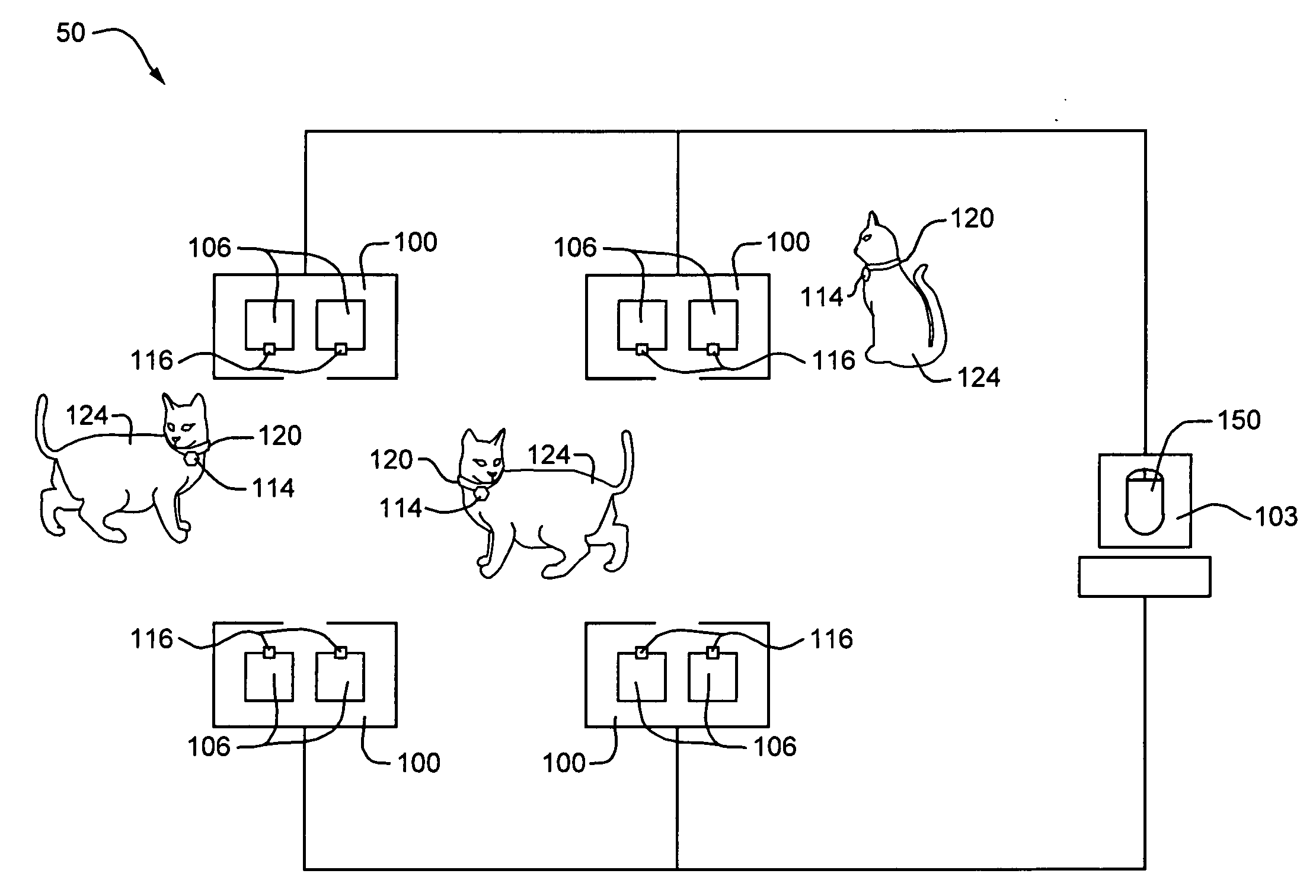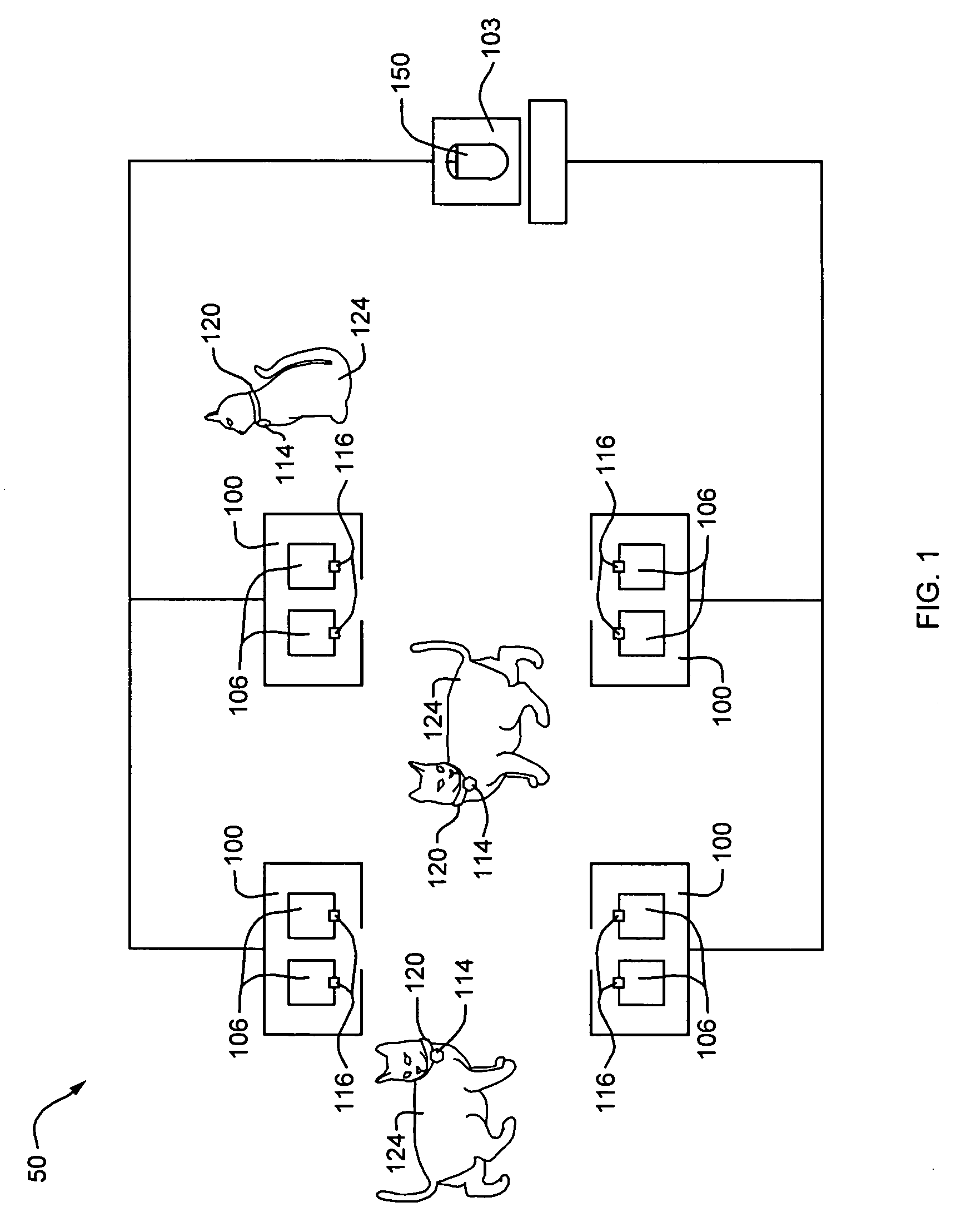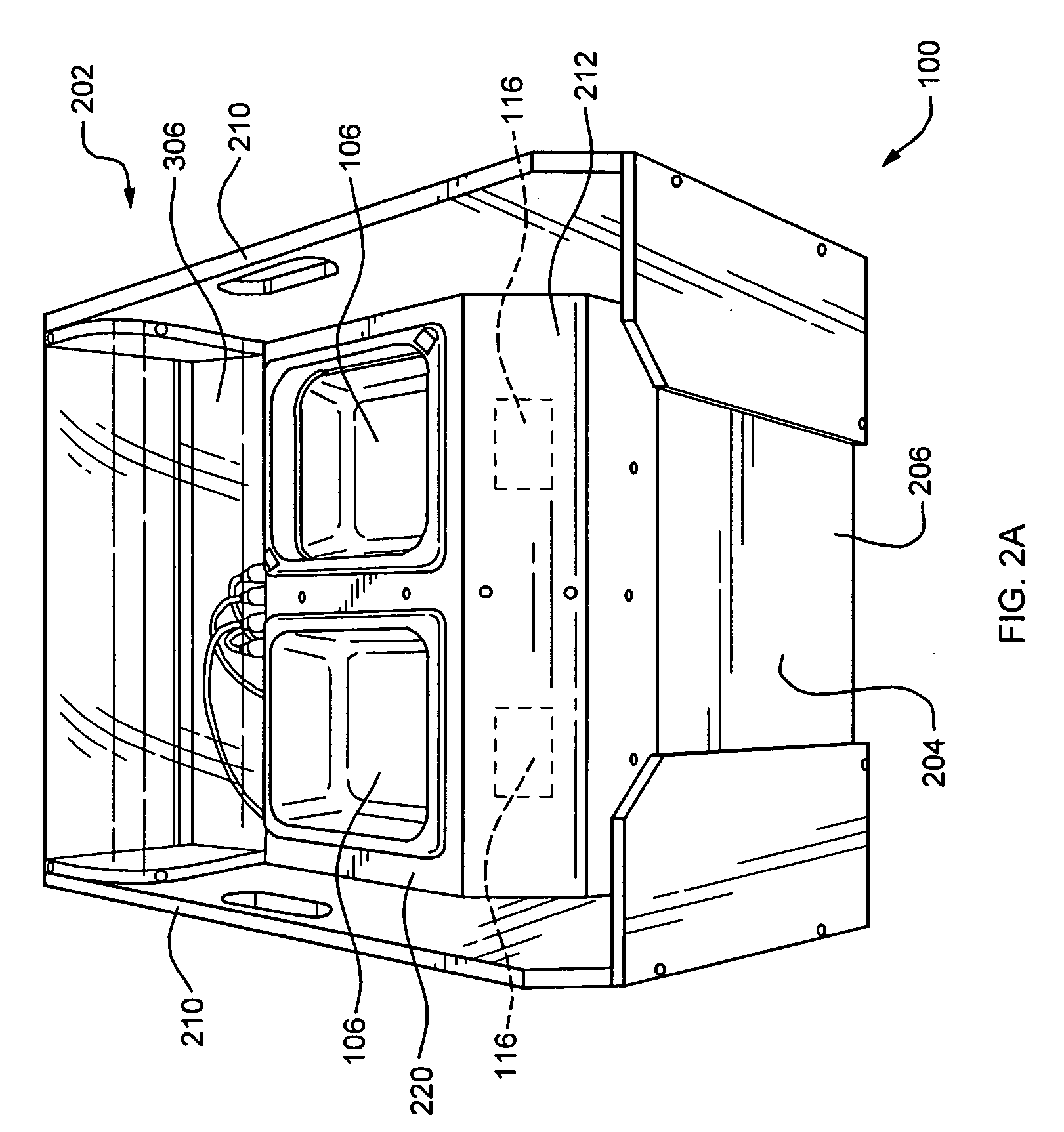Palatability monitoring system
- Summary
- Abstract
- Description
- Claims
- Application Information
AI Technical Summary
Benefits of technology
Problems solved by technology
Method used
Image
Examples
example 1
Food Monitoring Stations
[0104]A two bowl palatability testing food monitoring station in a group housing environment will be described.
[0105]The housing 202 for each food monitoring station 100 is constructed from smooth ½″ white plastic, high density natural plate products produced by Quadrant Engineering Plastic Products.
[0106]Bowl cutouts 602a and 602 are cut into the platform 220, large enough not to impede upon bowl weighing.
[0107]Each bowl 106a and 106b sits on separate scale 108a and 108b. Scales 108a and 108b may be Citizen, Model Number 1200 scales. Station 100 has been developed to utilize different types of scales. For example a Citizens MN 1200 may be used for cats and a Citizens MN 2100 may be used for dogs. The model 1200 scales have a range up to 1200 grams and the model 2100 will measure up to 3000 grams.
[0108]The sides of the housing are constructed 10 inches high with a 7 inch entry way 110. The size of the entry way door 110 is reduced from the total width in orde...
example 2
Component Connections and Interfacing
[0112]A “Dual Serial to USB Converter” manufactured by Cable Unlimited, part number-USB-2925, is used to combine the serial outputs of both scales to one USB.
[0113]Each RFID reader is interfaced with a USB port. A 4 port USB hub, manufactured by Cables Unlimited, part number—ATN-G-uh174, is used to combine the scales USB, plus the two reader USB, into one USB output to the Palatability Central Station.
[0114]An extra USB port is available at each station for the optional digital camera or web camera.
[0115]Output from each food monitoring station is cabled to the central station via a single USB cable. USB extension cables may be used for long distances.
example 3
Central Station 103
[0116]The central station has minimum system requirements of 512 MB RAM, Pentium III 800 MHz CPU, Microsoft Windows 2000 / XP, and Microsoft Excel, USB 2.0.
[0117]Central station 103 is capable of interfacing up to 40 two-bowl food monitoring stations equipped for group housing data acquisition. The maximum number of other type stations depends upon what configuration is being used. The maximum number of stations is based on the limited number of corn ports and USB connections available at the computer and the memory usage and speed requirements of opening multiple interface windows and Excel windows for each station.
[0118]USB hubs of different configuration are used to combine multiple food monitoring stations to the palatability central station.
[0119]User interface software was developed in Visual Basic that initializes each station and allows the operator to choose what type of station is being used along with the RFID reader identification number.
[0120]Real time ...
PUM
 Login to View More
Login to View More Abstract
Description
Claims
Application Information
 Login to View More
Login to View More - Generate Ideas
- Intellectual Property
- Life Sciences
- Materials
- Tech Scout
- Unparalleled Data Quality
- Higher Quality Content
- 60% Fewer Hallucinations
Browse by: Latest US Patents, China's latest patents, Technical Efficacy Thesaurus, Application Domain, Technology Topic, Popular Technical Reports.
© 2025 PatSnap. All rights reserved.Legal|Privacy policy|Modern Slavery Act Transparency Statement|Sitemap|About US| Contact US: help@patsnap.com



